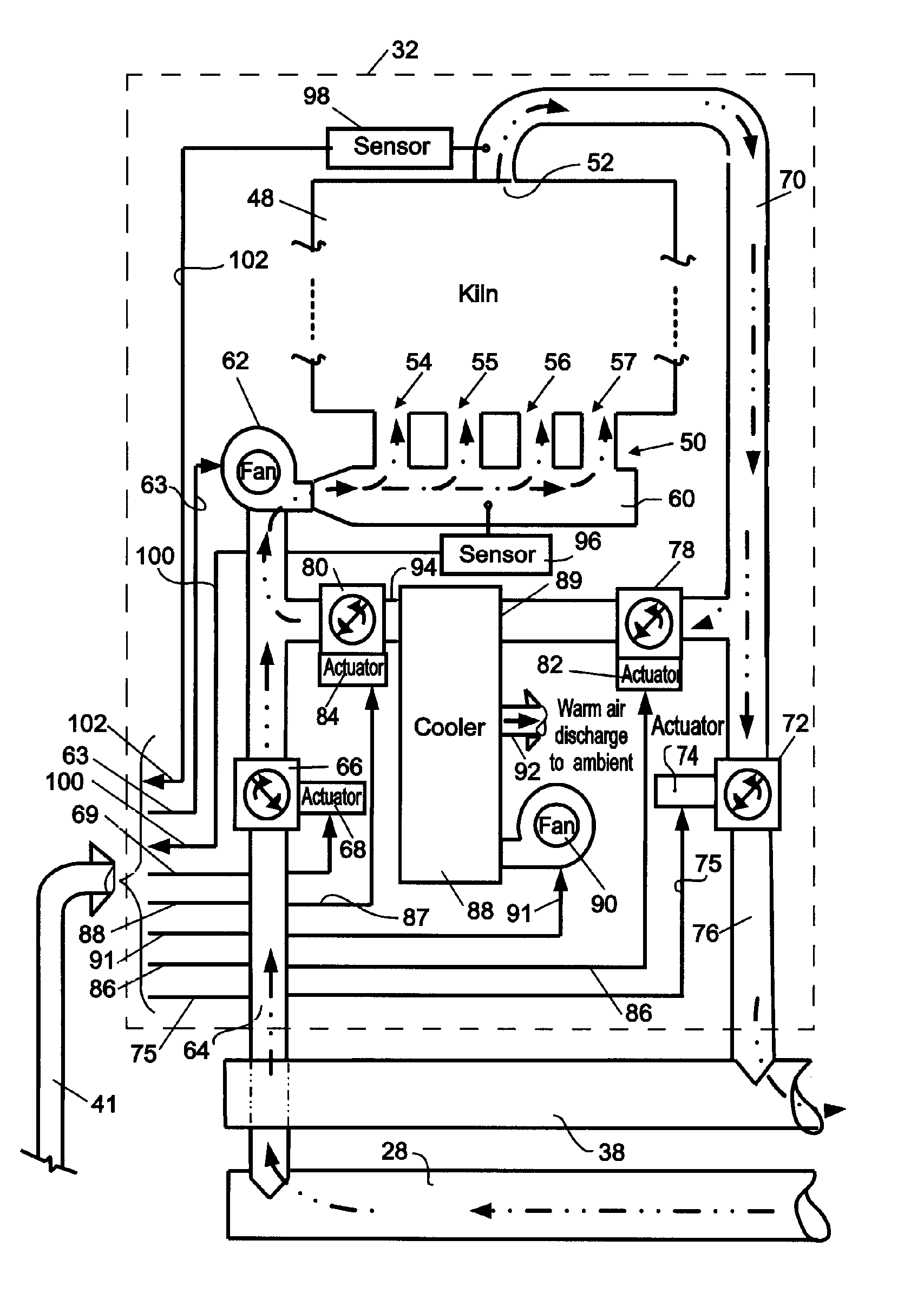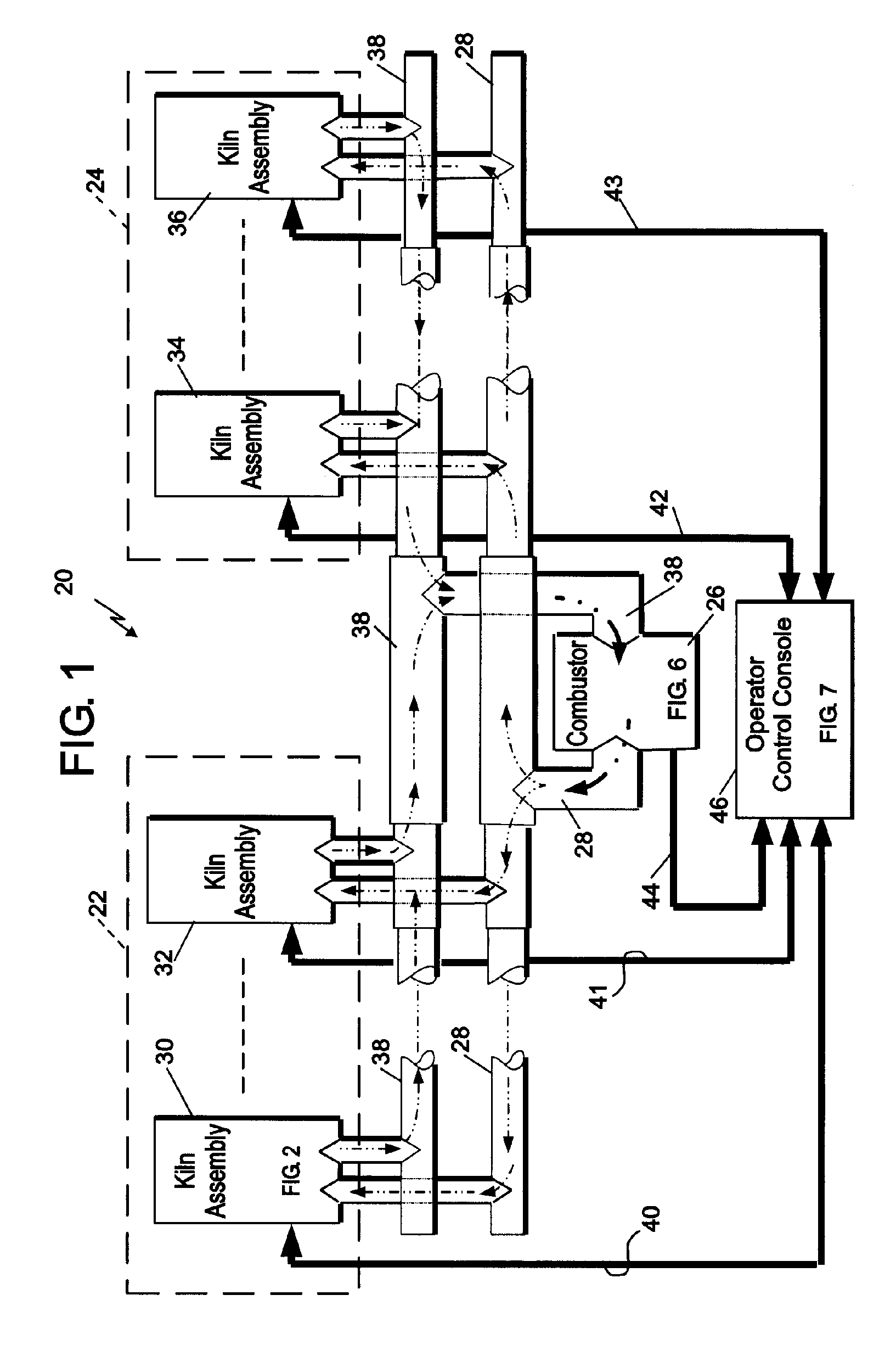Method and apparatus for producing charcoal
a technology of charcoal and methods, applied in the direction of lighting and heating apparatus, combustion types, furniture, etc., can solve the problems of large amount of fuel consumed, high energy demand of applications, proportionately higher volume of charcoal, etc., and achieve the effect of reducing the unit cost of producing charcoal and producing higher units of charcoal yield
- Summary
- Abstract
- Description
- Claims
- Application Information
AI Technical Summary
Benefits of technology
Problems solved by technology
Method used
Image
Examples
Embodiment Construction
[0029] The present invention is to a method and apparatus for producing charcoal in a high volume batch process. The process is performed in individual kilns which share a common external combustor, and whose primary source of fuel are the VOC wood gases produced by the exothermic, or pyrolysis phase of each kiln's batch cycle. In the best mode embodiment the kilns perform their processes in a relative ordered sequence intended to provide a continuing supply of wood gases to satisfy the endothermic phase heat demand of the kilns with the pyrolysis wood gases produced by those kilns in their exothermic phase. This provides a system energy balance and minimizes the need for supplementary fuels.
[0030] While the number of kilns in a given system configuration is principally a function of the production demand and throughput (batch process volume) placed in the system, which can be scaled within limits, the invention's best mode embodiment limits the minimum and maximum number of kilns ...
PUM
| Property | Measurement | Unit |
|---|---|---|
| temperature | aaaaa | aaaaa |
| temperature | aaaaa | aaaaa |
| time | aaaaa | aaaaa |
Abstract
Description
Claims
Application Information
 Login to View More
Login to View More - R&D
- Intellectual Property
- Life Sciences
- Materials
- Tech Scout
- Unparalleled Data Quality
- Higher Quality Content
- 60% Fewer Hallucinations
Browse by: Latest US Patents, China's latest patents, Technical Efficacy Thesaurus, Application Domain, Technology Topic, Popular Technical Reports.
© 2025 PatSnap. All rights reserved.Legal|Privacy policy|Modern Slavery Act Transparency Statement|Sitemap|About US| Contact US: help@patsnap.com



